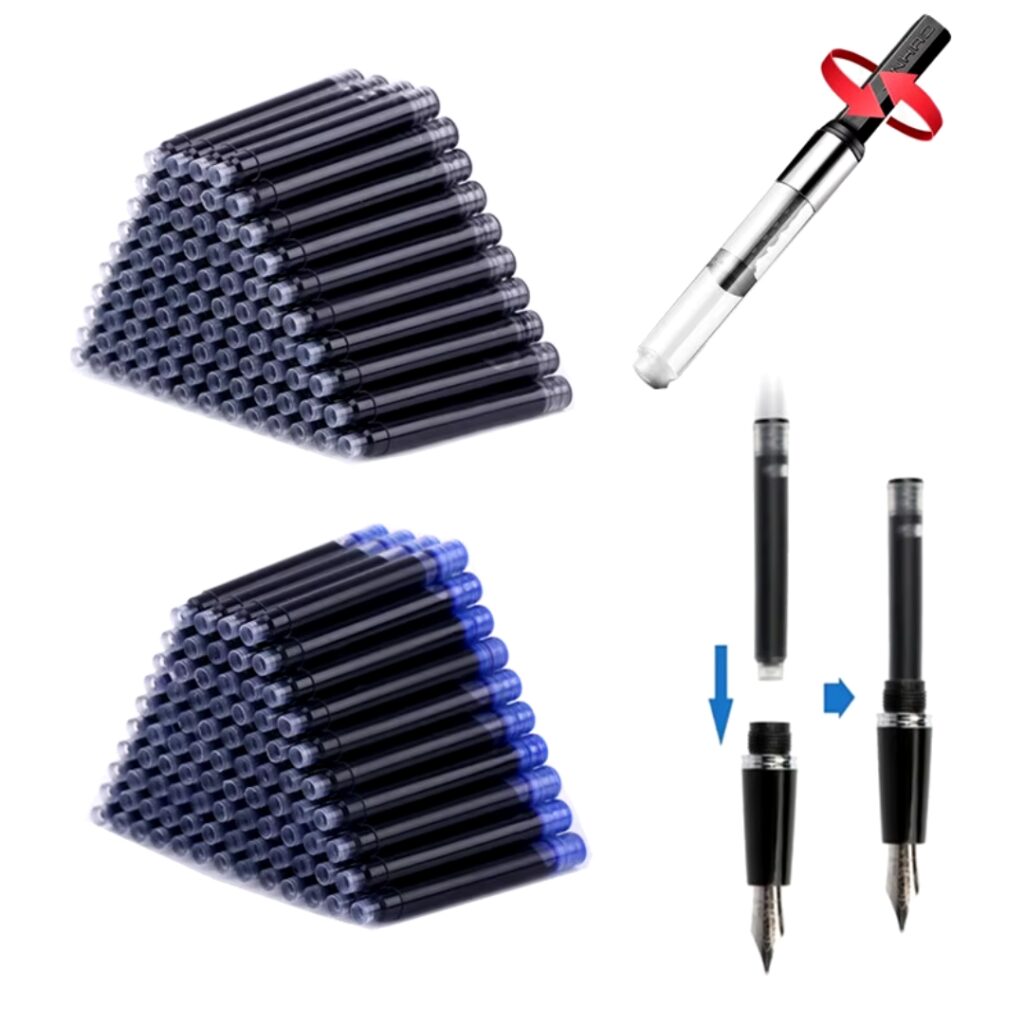
The phrase pen ink often evokes simple images of handwriting, calligraphy, or office stationery. However, its role and composition stretch far beyond the basic idea of fluid color in a pen. Ever wondered why the same ink appears crisp on one sheet and bleeds or fades on another? This is not a coincidence. It involves chemistry, paper quality, and the intention behind ink formulation.
In this article, we dive deep into the world of pen ink—how it’s made, how it reacts with different materials, and why choosing the right ink matters for both everyday writing and professional uses.
The Science Behind Pen Ink
Pen ink is not just colored liquid—it’s a calculated formula combining dyes or pigments, solvents, preservatives, and surfactants. The role of each component is specific. Dyes give it color, solvents keep it in a usable state, surfactants help with smooth flow, and preservatives prevent bacterial growth.
Most commonly used pen inks are water-based or oil-based. Water-based inks are found in fountain pens and rollerballs. They flow smoothly and dry slower. Oil-based inks are typical in ballpoints, offering quicker drying and more resistance to smudging. The behavior of pen ink depends on its viscosity, drying time, and interaction with air and surface textures.
The Role of Paper: Why It Changes the Game
The surface you’re writing on is not just a passive medium. It greatly affects how pen ink behaves. Smooth, glossy papers don’t absorb ink as quickly, causing longer drying times. Textured or porous papers might absorb it too fast, resulting in feathering or bleeding.
Take, for example, a basic notebook versus premium stationery. The ink from the same pen may look sharp and clean on high-quality stationery but fuzzy or inconsistent in a cheaper notebook. This variation is due to the paper’s porosity, fiber structure, and coating.
Some papers are treated with a special finish that interacts better with pen ink. These finishes create a controlled spread of ink molecules, maintaining line sharpness. Without such treatment, the ink can soak through unevenly, especially if it’s water-based.
Why One Pen Ink Is Not for All Pens
Though it may seem convenient to use the same ink across all your pens, different pens are engineered for specific ink types. Fountain pens use ink that flows with minimal pressure. Using a thick ballpoint ink in them can clog the internal system. Gel pens use pigment-based ink that settles atop the paper. Mixing that with a dye-based ink from another pen can lead to poor performance or even damage.
This makes brand-specific or pen-specific pen ink refills important. Not every ink is compatible with every writing instrument, even if the barrel fits. Manufacturers usually design their inks to suit the mechanics and nib structure of their pens. That’s why using the recommended ink ensures longevity and consistency.
Colors, Permanence, and pH Levels
Modern pen ink comes in a variety of colors, from standard black and blue to vibrant shades like emerald, burgundy, or teal. The color effect is influenced by pigment concentration, binder materials, and the pH level of the ink. Acidic inks might fade over time or damage the paper, while pH-neutral inks ensure longevity, making them preferable for archiving or official documentation.
Archival pen ink is made with fade-resistant pigments and stabilizers that ensure it doesn’t degrade with exposure to air or light. Calligraphers and documentarians often select these to ensure the written words survive for generations.
Ink in Professional and Artistic Fields
Calligraphy, fine art, drafting, and professional documentation depend heavily on the right type of pen ink. Artists working with linework or ink washes must consider how the ink reacts with water, whether it can be layered, and how it behaves on mixed media papers.
In corporate sectors, pen ink plays a role in branding. Personalized pens with custom inks—like signature blues or corporate blacks—convey attention to detail. Legal industries require specific ink types to meet documentation standards, like permanent ink that doesn’t fade under archival conditions.
For journaling, bullet planning, or creative writing, the right pen ink can turn a task into an enjoyable ritual. It enhances the visual appeal, inspires creativity, and reinforces the personal value of written expression.
Trends in Pen Ink Preferences
Globally, there’s an increasing preference for environmentally conscious pen ink formulations. Brands now offer inks made from plant-based dyes or biodegradable ingredients. Refillable ink cartridges are another growing trend, helping reduce plastic waste. Some even come in glass bottles, adding a vintage charm while promoting reuse.
Artisans and boutique ink makers are creating limited edition inks that change color under different lights or mimic traditional hues from historical manuscripts. These inks appeal to collectors, calligraphy enthusiasts, and those seeking a unique writing experience.
How to Store and Handle Pen Ink
Proper handling extends the life of both the ink and your writing tools. Keep ink bottles tightly sealed and store them in cool, dry places away from direct sunlight. Contaminated ink can develop mold or sediment, which can clog pen channels.
Clean your pens regularly, especially if switching between inks. Mixing residual ink from previous fills with a new formula can lead to chemical reactions that thicken or spoil the pen ink.
Avoid shaking ink bottles vigorously, as this may introduce air bubbles. If your pen skips or writes inconsistently, it’s often a sign that the ink has thickened or the nib needs cleaning.
Selecting the Right Pen Ink for Your Needs
Choosing the right pen ink depends on your writing style, purpose, and even the type of paper you usually use. Are you a daily note-taker, a creative artist, a legal professional, or a student? Each role demands different ink behavior.
For everyday writing, quick-drying inks are practical. For artwork, you may prefer waterproof or lightfast ink. For personal letters or journaling, aesthetically rich shades or scented inks offer a delightful experience.
Online stores and specialty shops offer pen ink sample kits, allowing users to test colors and flow types before committing to a full bottle. This approach helps avoid waste and ensures satisfaction.
Final Thoughts
Pen ink is more than just a medium—it’s an experience. The way it interacts with your pen, your hand movement, and the paper tells a story. Whether you’re writing a business letter, crafting a poem, or sketching an idea, the right ink transforms your work from functional to expressive.
By understanding the science and artistry behind pen ink, you elevate your writing journey. Make thoughtful choices, care for your tools, and let every stroke reflect your style. Let the ink flow—and with it, your thoughts, ideas, and creativity.



